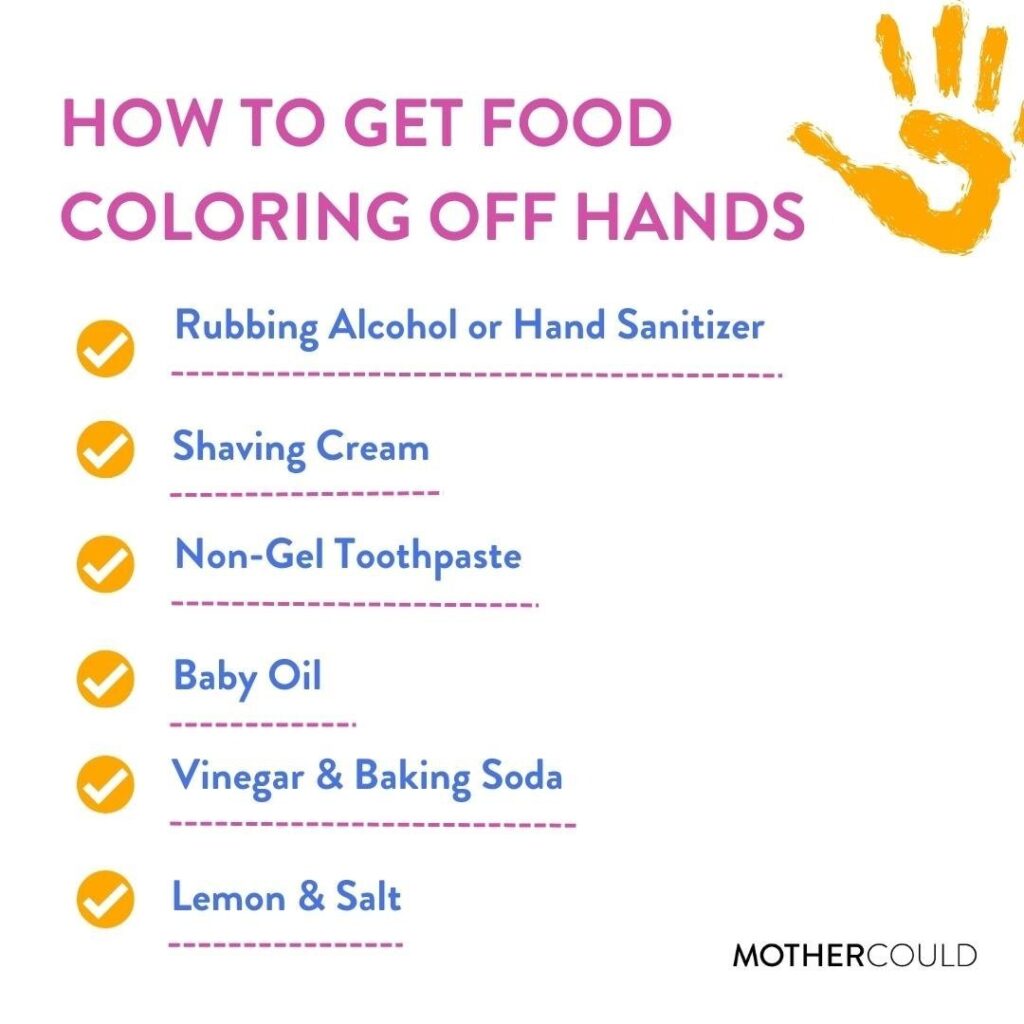
Food coloring is a common ingredient in many foods and beverages, adding vibrant hues to everything from cakes to candies. While it enhances the visual appeal of our treats, food coloring can sometimes leave unwanted stains on our skin. This article will delve into the nature of these stains, provide effective removal methods, and outline essential safety precautions when handling food coloring.
We’ll explore the reasons behind food coloring stains, discuss various techniques for removing them, and emphasize the importance of safe handling practices to prevent potential irritation or harm. By following the tips outlined in this article, you can confidently enjoy colorful treats while minimizing the risk of pesky stains and ensuring your safety.
Food Coloring Stains on Skin
Food coloring stains typically occur when brightly colored food dyes come into contact with our skin. Lighter skin tones are more susceptible to staining as the color pigments are more visible against a paler background. The intensity of the stain depends on several factors, including the type and concentration of food coloring used, the duration of contact, and individual skin sensitivity.
While most food coloring stains are temporary and harmless, they can be aesthetically displeasing. The dyes often adhere to the outermost layer of skin, making them visible until they naturally fade or are removed through cleaning. Certain types of food coloring, particularly those containing natural pigments like beetroot extract or turmeric, may leave more persistent stains due to their chemical composition.
Removing Food Coloring Stains
Fortunately, removing food coloring stains from skin is generally straightforward. The most effective method involves using soap and water to gently scrub the affected area. Apply a mild soap to your hands or a washcloth and work it into a lather. Rub the soapy solution onto the stain in circular motions for several minutes, then rinse thoroughly with clean water.
For stubborn stains that resist removal with soap and water alone, consider using an oil-based cleanser. Olive oil, coconut oil, or baby oil can help break down the dye molecules and loosen their grip on the skin. Apply a small amount of oil to the stain and gently massage it in for a few minutes. Allow the oil to sit for 5-10 minutes before wiping it away with a damp cloth.
Additional Tips
- For delicate skin, opt for fragrance-free soaps and cleansers to minimize irritation.
- Avoid using harsh chemicals or abrasive scrubbers as they can damage your skin.
- If the stain persists despite these methods, consult a dermatologist for further advice.
Safety Precautions with Food Coloring
While food coloring is generally considered safe for consumption when used in moderation, it’s essential to exercise caution when handling it to prevent potential skin and eye irritation. Always wear gloves when working with concentrated food coloring solutions to protect your hands from direct contact.
Avoid getting food coloring in your eyes or mouth. If contact occurs, rinse the affected area thoroughly with water for several minutes. If you experience any redness, itching, or discomfort, discontinue use and consult a healthcare professional.
Gentle Cleaning Methods
When removing will food coloring stain skin, opt for gentle cleaning methods to avoid irritation.
- Start by washing your hands thoroughly with soap and water before handling food coloring.
- If you get food coloring on your skin, immediately rinse the area with cool water.
- Use a mild soap or baby wash to gently scrub the stain. Avoid using harsh chemicals or abrasive cleaners.
- For stubborn stains, try applying a small amount of olive oil or coconut oil to the affected area and gently massage it in. Leave it on for a few minutes before rinsing thoroughly with water.
Conclusion
Food coloring can temporarily stain skin, but these stains are usually harmless and easily removed with simple cleaning methods. By following the safety precautions outlined in this article, you can minimize the risk of irritation and enjoy colorful treats without worry. Remember to always handle food coloring with care, wash your hands thoroughly after use, and seek medical advice if you experience any adverse reactions.
